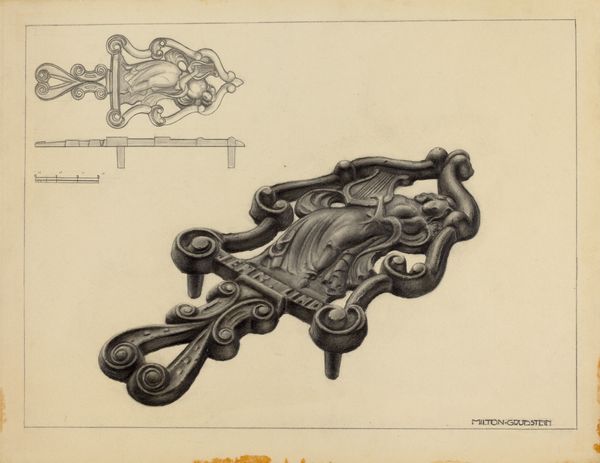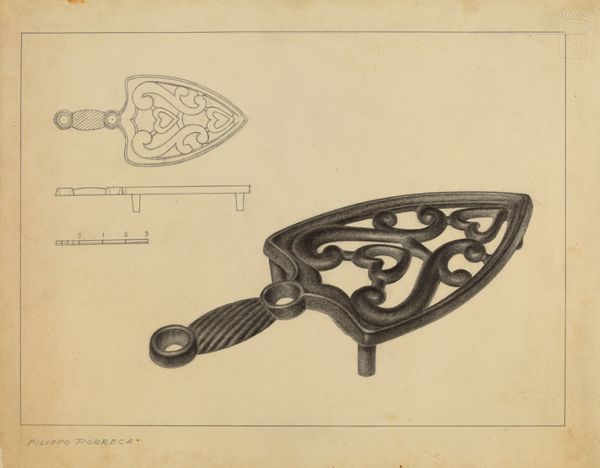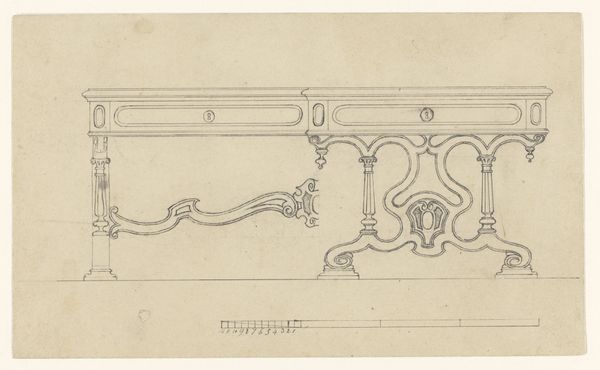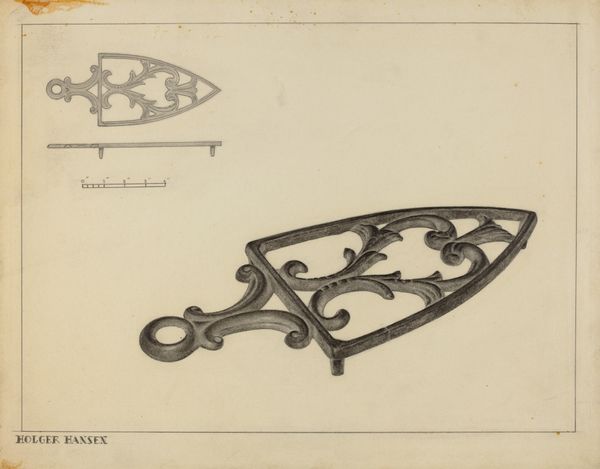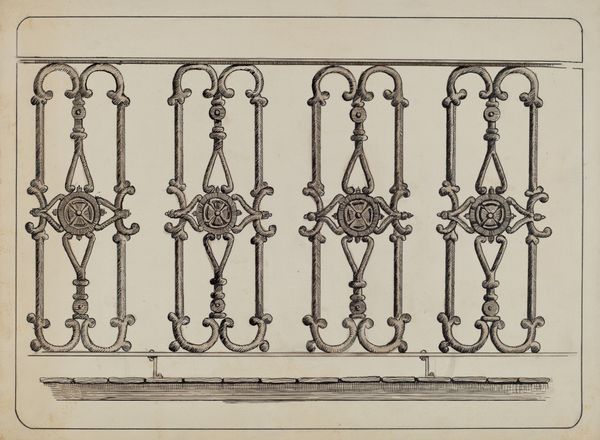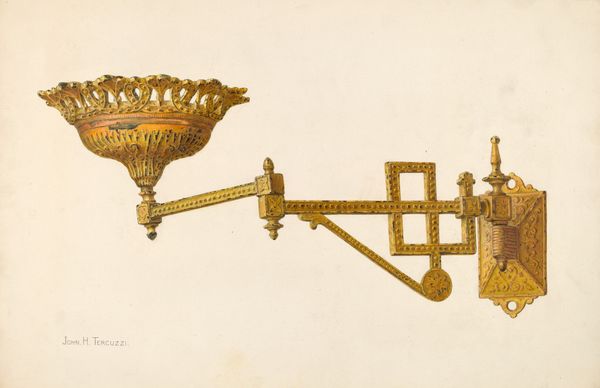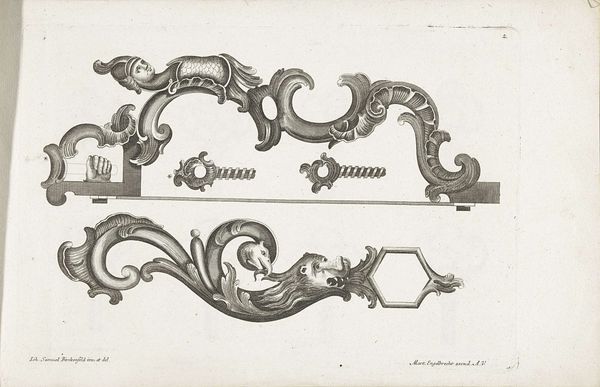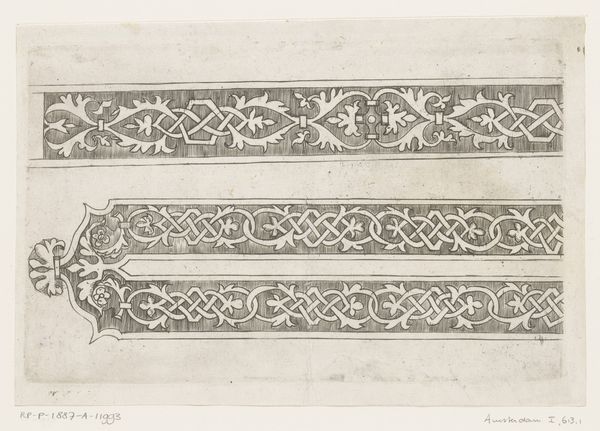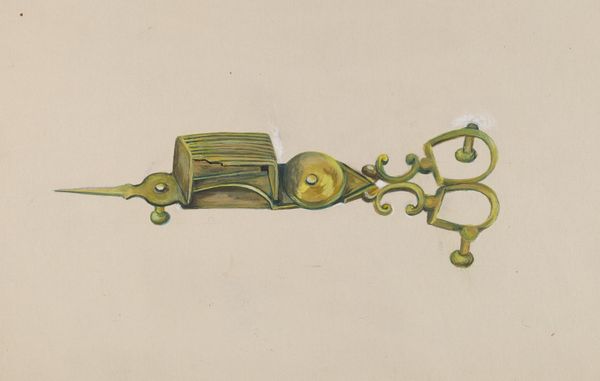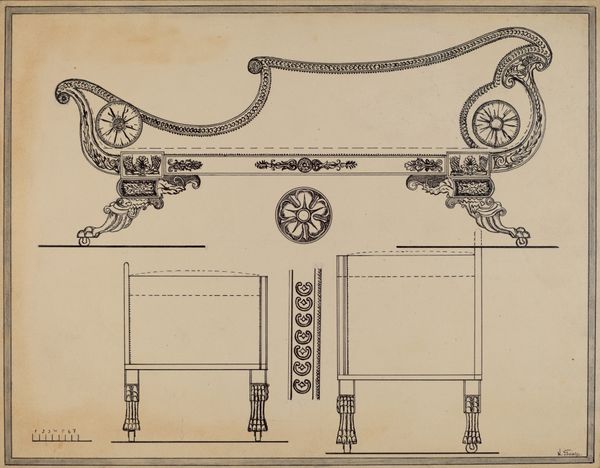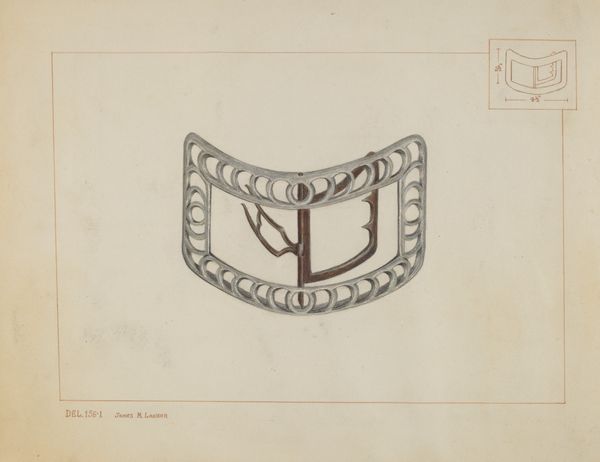
drawing, metal, paper
#
drawing
#
metal
#
paper
#
geometric
Dimensions: overall: 35.6 x 24.4 cm (14 x 9 5/8 in.)
Copyright: National Gallery of Art: CC0 1.0
Curator: Here we have Verna Tallman’s "Hinge," a drawing created around 1937, likely with metal and paper. It offers an elegant depiction of a functional object. Editor: It has such intricate flourishes! My initial impression is one of almost baroque extravagance, but grounded in the reality of a working hinge. The contrast is intriguing. Curator: Indeed. What seems remarkable is that the artist chose to represent an object so common in daily life. We often overlook the design and craft embedded in even the most functional pieces. Perhaps she aimed to elevate the everyday into the realm of art, reflecting the Arts and Crafts movement's ideals. Editor: The careful rendering, the detail given to the scrolling forms, it speaks of close observation and meticulous craftsmanship. Note the subtle gradations of light across the metal's surface, conveying volume and texture. The negative space, created by those curls, is as important as the metal itself, forming complex, visually arresting shapes. Curator: Tallman worked with the Index of American Design, which sought to document and preserve the folk art traditions of the United States. These illustrations served a public purpose: a cultural inventory during a time of social upheaval and economic depression, asserting a national artistic identity rooted in vernacular traditions. Editor: So it is simultaneously utilitarian and aesthetic. The image embodies form following function, with embellishment almost fighting with it. Are these scrolls practical at all, or entirely decorative? Curator: Good question! The decorative elements may reflect regional aesthetics. It's interesting to consider the cultural values expressed through even seemingly insignificant hardware, suggesting how deeply design permeates every aspect of our material environment. Editor: Seeing it now, I better appreciate the artist’s selection of an object generally perceived as mundane. It forces one to reconsider those little unnoticed things and acknowledge their aesthetic possibilities. Curator: I agree. Looking closely at this, it changes one’s awareness, demonstrating art's power in directing how we look at familiar things.
Comments
No comments
Be the first to comment and join the conversation on the ultimate creative platform.

